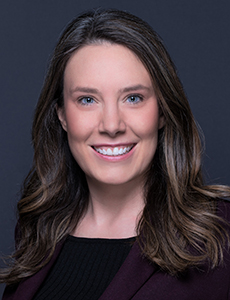 Risk Central
Risk Central
White papers, service directory and conferences for the R&I community.

Companies across diverse industries are increasingly developing their own energy generation capabilities, driven by rising electricity demands from data centers and concerns about grid reliability and affordability. This trend toward energy independence represents a fundamental shift in how businesses approach power security and risk management, according to energy transition experts at AXA XL.
The transformation to energy “prosumers” involves companies building comprehensive power generation and storage systems tailored to their specific operational needs. Solar energy leads this movement as the most cost-effective option, with organizations installing solar panels alongside battery storage facilities to create independent energy sources.
“Many different companies are now building their own solar panels or battery storage facilities to maintain independent energy sources,” said Katherine Gerber, Head of Energy and Energy Transition at AXA XL in the Americas. The process extends beyond traditional solar installations to include wind energy, particularly for agricultural applications in the Midwest, and emerging nuclear technologies.
Small modular nuclear reactors will present another option in corporate energy independence. These are currently in the financing stage with expected deployment around 2027-2028. These new nuclear options provide more consistency and controllability than previous generations of nuclear, offering particular advantages in areas prone to weather challenges like hail that can damage solar installations.

Katherine Gerber, Head of Energy and Energy Transition, AXA XL
Battery storage serves as the critical component across all solar and wind energy projects, addressing the economic challenge that power generation often occurs when energy demand is lowest. Companies must safely store generated power until demand peaks during early mornings and evenings, requiring sophisticated storage solutions integrated into their energy infrastructure. The components of batteries for long duration storage have come a long way for more companies to consider building their own energy sources.
The scope of companies pursuing energy independence is broad.
“We continue to be surprised by the diversity of companies investing in this area, spanning manufacturing, technology, retail, and entertainment sectors,” Gerber noted. The trend extends far beyond obvious candidates like electric services companies to encompass a broad range of industrial applications.
Hyperscalers including Google, Meta, and Microsoft represent the most visible examples of this transformation. These technology giants are developing massive data centers with integrated power generation capabilities, particularly in rural locations across West Texas, Arizona, and parts of the Midwest where land availability and natural resources support large-scale renewable installations.
The geographic distribution reflects practical considerations rather than political preferences. “The biggest uptick is occurring in areas you might not expect from a political standpoint: West Texas, Arizona, and Louisiana,” explained Chris Fasser, Energy Transition Strategy at AXA XL. These regions offer abundant land and natural resources but face significant infrastructure challenges that make energy independence particularly attractive.
Texas exemplifies the business case for energy independence, having experienced close to 200 major outages in the past twenty years, causing real impact to business operators and communities across the state. These weren’t minor inconveniences but real economic impacts affecting daily operations, making the ability to establish solar, wind, and on-site storage capabilities a solution to genuine business risk.

Chris Fasser, Energy Transition Strategy, AXA XL
AXA XL’s approach to insuring energy independence projects encompasses the entire energy value chain, from project financing through construction, production and operations, and ultimately decommissioning. The company offers various insurance products along this value chain, with particular strength in construction and property underwriting, risk engineering, and expanding opportunities in casualty coverage.
Structured risk solutions, particularly performance products, represent a significant growth area. These products prove especially valuable for newer technologies beyond traditional solar and wind, including various hydrogen projects and exotic applications like pink hydrogen capabilities using runoff from nuclear operations.
“Where we’re seeing significant interest is in the structured risk solutions space, particularly with performance products for emerging technologies” Fasser said. AXA XL’s involvement extends beyond traditional insurance products to include risk engineering capabilities and upfront advisory services before construction begins.
The insurance approach addresses risks beyond traditional business interruption concerns. Reputational risk emerges as a critical factor, particularly for facilities in rural, smaller communities where companies must ensure they’re not perceived as driving up energy costs for community hospitals, schools, or residential areas.
“Some of this is about reputational risk and facilitating the necessary conversations to get local and community buy-in,” Fasser said.
“These are hyper-localized conversations,” Gerber added.
“If additional energy is needed to support new data centers, the message needs to be: We’re going to be self-sustaining and power our own operations without stressing the grid. Thankfully, this alleviates some of the reputational risk the firm could see if they were connected to the grid. But, underwriting this type of risk might not fall within traditional insurance appetites, and it’s needed,” she said.
Beyond risk transfer, there is plenty that a company like AXA XL can do on the risk mitigation side of things.
AXA XL’s risk engineering capabilities include making recommendations for derisking energy facility location placement, creating additional space between battery storage installations, and other design modifications that add significant value. The goal extends beyond merely providing insurance policies to delivering comprehensive risk management, technological guidance, and financing options that ensure long-term project viability and community citizenship.
“In terms of getting local approval and community support to establish these facilities, that’s a risk partnership opportunity that we are also discussing with our clients,” Fasser said.
“We help them build strategies to become good community members when setting up these facilities. The real business impact revolves around affordability, consistency and security of energy.”
AXA XL works with financing partners to evaluate not just traditional property and casualty construction coverage but also long-term commercial viability, ensuring projects represent sound investments that benefit both companies and the communities where they operate.
To learn more, visit: https://axaxl.com/.
The information contained herein is intended for informational purposes only. Insurance coverage in any particular case will depend upon the type of policy in effect, the terms, conditions and exclusions in any such policy, and the facts of each unique situation. No representation is made that any specific insurance coverage would apply in the circumstances outlined herein. Please refer to the individual policy forms for specific coverage details.
AXA XL is a division of AXA Group providing products and services through three business groups: AXA XL Insurance, AXA XL Reinsurance and AXA XL Risk Consulting. In the US, the AXA XL insurance companies are: AXA XL Insurance Company Americas, Greenwich Insurance Company, Indian Harbor Insurance Company, XL Insurance America, Inc., XL Specialty Insurance Company and T.H.E. Insurance Company. Not all of the insurers do business in all jurisdictions nor is coverage available in all jurisdictions. Information accurate as of August 2025.
This article was produced by the R&I Brand Studio, a unit of the advertising department of Risk & Insurance, in collaboration with AXA XL. The editorial staff of Risk & Insurance had no role in its preparation.